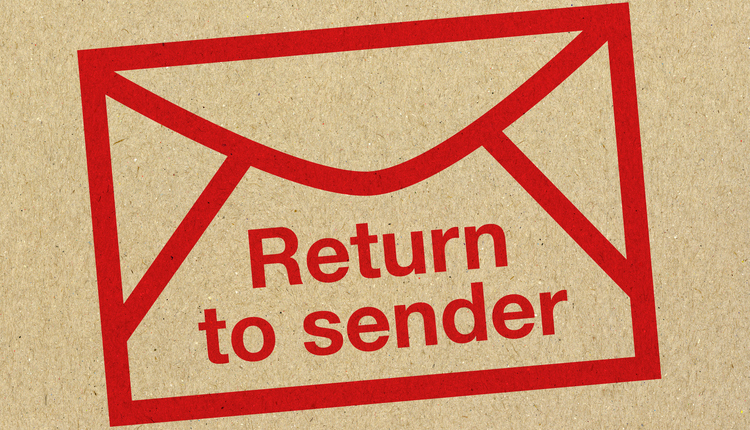In many corporate mail centers, the handling of inbound mail is still a mostly manual operation. Clerks look at packages, flats, letters, and magazines and sort them down to courier routes. Successful delivery relies heavily on information stored in the heads of the clerks, making it difficult to bring new mail center employees up to speed. Unusual events like a pandemic where several key employees may be out of the office for extended times, combined with the distribution of mail recipients working from home or on offsetting schedules, make the task even more complex.
COVID caused companies to change procedures in many areas of business. They adjusted as employees abandoned offices and became accustomed to work-from-home models. Social distancing restrictions squashed travel and turned conferences and other gatherings into virtual events. One may not think of the mail center as a hotbed of innovative thinking during a pandemic, but inbound mail handling is another place where organizations can take advantage of technology to make this task more suited to new ways of doing business.
Keeping track of employee locations in a large organization is difficult under any conditions. People often change jobs or leave the company. Sometimes companies relocate entire departments. When mail arrives from the post office, it’s the mail center’s job to match it up with the proper recipients and get it delivered — even if the name on the envelope matches no one presently employed at the company. Corporate directories are helpful, but it takes time to look up employees and then sort the mail to the assigned couriers in time for their delivery routes. When this happens, it can delay mail delivery.
A New Approach to Inbound Mail
Fortunately, a combination of cameras, sorting hardware, software, and an intelligent rules engine can end this mail distribution bottleneck. These systems scan the address block of incoming mail, find the proper person or department to receive, and then sort the mail to the relevant courier route.
The best systems use intelligent rules to resolve aliases. The corporate directory may list an employee as Robert Smith, but his mail may come addressed as Bob Smith, R. Smith, Robt Smith, or other variations or misspellings. In an organization that employs two Robert Smiths, the system must be able to decide which one is the appropriate recipient. If the piece is an advertisement about tax strategies, then the system will route the piece to the employee in accounting. If it’s a catalog about janitorial supplies, then the system sends the mail to Robert Smith in facilities management.
WFH Changes Things
With many employees working from home, an alternative delivery channel has become critical. Instead of packaging inbound mail to deliver to an employee’s home, or waiting for employees to come pick up their mail, some organizations are implementing hybrid solutions that scan the outside of each mail piece and then send an image and a notice to the addressee. The employee then decides about the disposition of the piece. Their choices might include:
· Instruct the mail center to send the physical mail to them
· Ask the mail center to open and scan the contents, and send the results electronically
· Hold the mail for later pick up
· Order the mail piece destroyed
· Re-route the mail piece to a different employee
I used such a system many years ago when I was working on a long-term project out of town. I could keep up with mail addressed to me at the home office without the delay that would have been built into a solution that simply forwarded the mail to me. We discovered we could destroy much of the mail I would have ordinarily received. By marking the mail for destruction, I saved the delivery expense, reduced my exposure to identity theft from stolen mail, and saved time for myself.
A Challenge for Mail Producers
The adoption of electronically distributed postal mail will present challenges to the producers of that mail. If addressees can choose to destroy the mail without even touching it, then marketers and other mail creators must make their mail more interesting and relevant. This is a similar problem faced by those communicating by email. They must grab the recipient’s attention with enticing subject lines.
When the challenge is getting the message seen by the addressee, envelope printing could be the answer. I’ve covered this issue in earlier columns. See “Time to Abandon Window Envelopes” or “Window Envelopes vs. Closed-Face”.
The concept of the paperless office has been around for decades, but we are still creating and consuming paper documents. Many organizations are transitioning to all-electronic communication methods, but that will take time. For now, a better strategy for dealing with inbound mail is in order. Take a step towards the future and investigate inbound mail sorting and distribution systems. You may realize labor savings by reducing courier routes, while simultaneously improving the productivity of the employees served by the corporate or campus mail center.
Mike Porter at Print/Mail Consultants creates content for the document industry and helps document operations build and implement strategies for future growth and competitiveness. Learn more about his services at www.printmailconsultants.com and www.pmccontentservices.com. Follow @PMCmike on Twitter or send him a connection request on LinkedIn.
















![GettyImages-617745578-[Converted]](https://cms-static.wehaacdn.com/mailingsystemstechnology-com/images/GettyImages-617745578--Converted-.1013.widea.0.jpg)